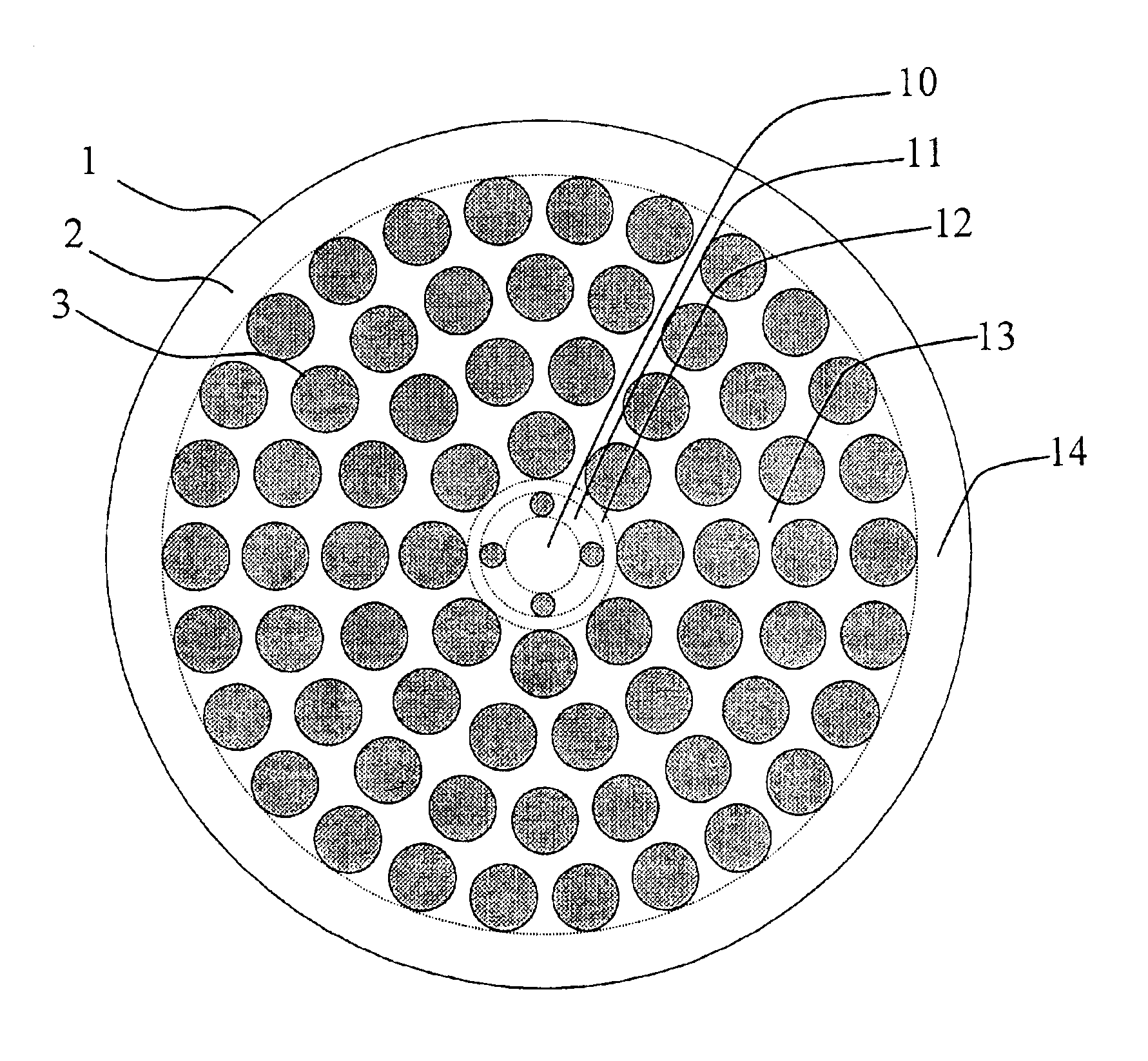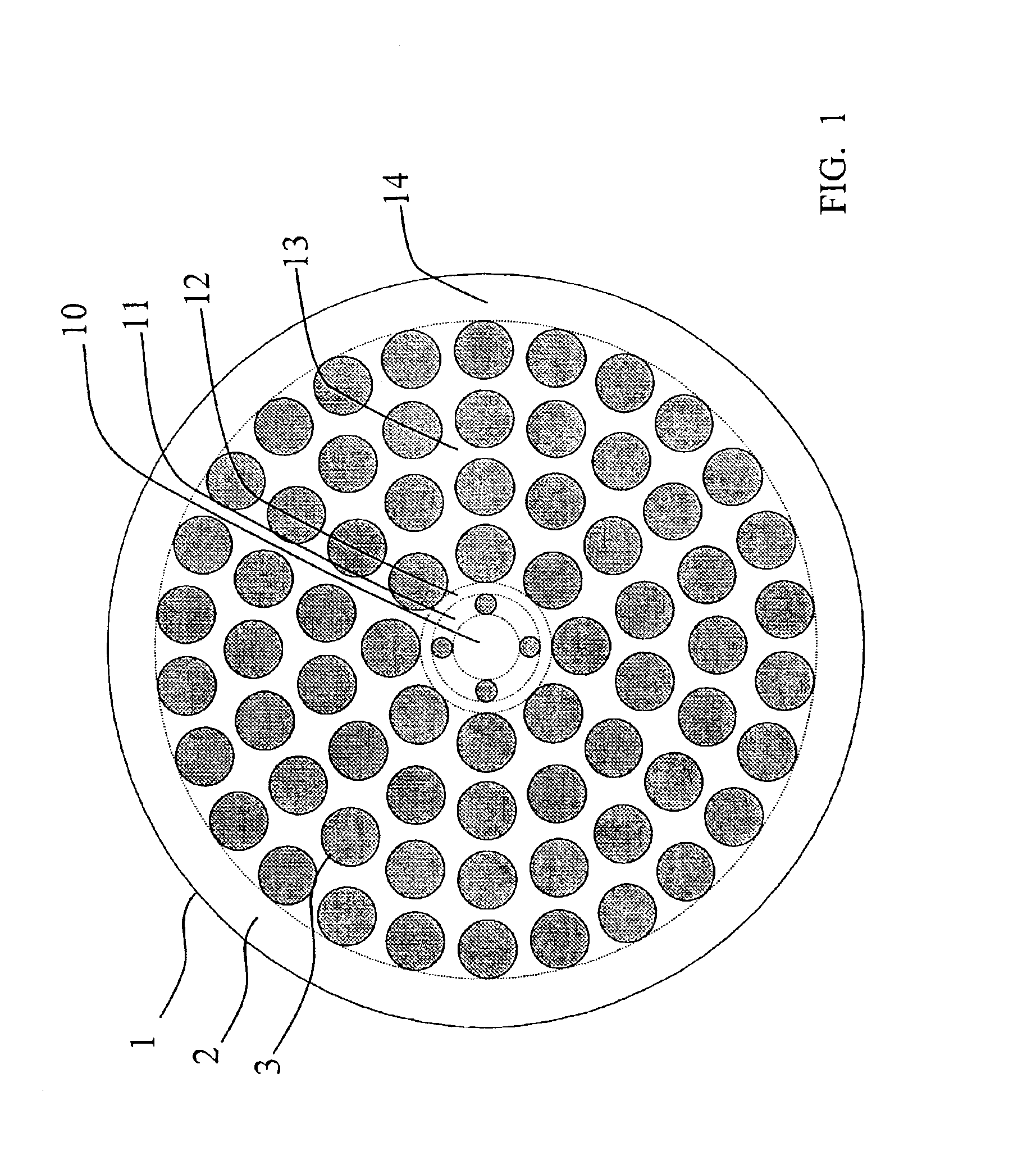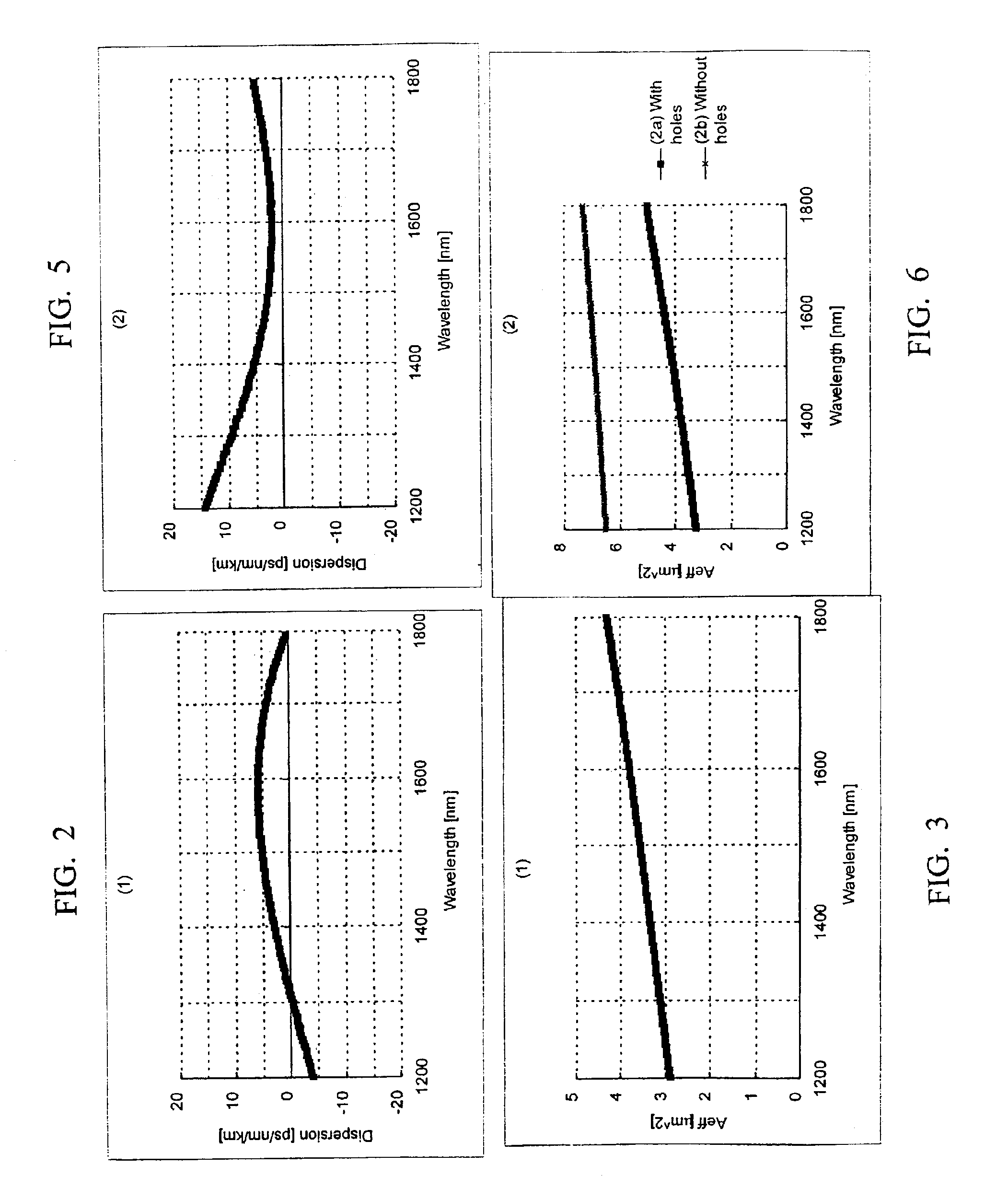Microstructured optical fiber and optical module
a technology of optical fibers and microstructures, applied in the field of microstructured optical fibers, can solve the problem that the sub medium is not necessarily able to constitute an optical fiber by itself, and achieve the effect of reducing the effect of optical fibers, facilitating closure, and small effective area
- Summary
- Abstract
- Description
- Claims
- Application Information
AI Technical Summary
Benefits of technology
Problems solved by technology
Method used
Image
Examples
Embodiment Construction
[0024]FIG. 1 is an illustration of a cross section taken perpendicular to the fiber axis of a microstructured optical fiber in accordance with the present invention. A plurality of holes 3, which are sub media, are arranged in silica glass 2, which is a main medium. The silica glass is typically free from impurities. However, it is also favorable to add dopants such as germanium, fluorine, chlorine, boron, aluminum, and titanium to silica glass and form a refractive index profile within the cross section of the optical fiber. As a result, it becomes possible to maintain waveguiding function even if the holes are collapsed. Such collapses are often caused in fusion splices of the optical fiber with other optical components, so that optical loss at a fusion splice can be suppressed by the waveguiding index profile. Also, by adding germanium to silica glass and exposing the optical fiber to UV radiation, it becomes possible to form fiber gratings and realize optical filters and optical...
PUM
| Property | Measurement | Unit |
|---|---|---|
| Diameter | aaaaa | aaaaa |
| Length | aaaaa | aaaaa |
| Area | aaaaa | aaaaa |
Abstract
Description
Claims
Application Information
 Login to View More
Login to View More - R&D
- Intellectual Property
- Life Sciences
- Materials
- Tech Scout
- Unparalleled Data Quality
- Higher Quality Content
- 60% Fewer Hallucinations
Browse by: Latest US Patents, China's latest patents, Technical Efficacy Thesaurus, Application Domain, Technology Topic, Popular Technical Reports.
© 2025 PatSnap. All rights reserved.Legal|Privacy policy|Modern Slavery Act Transparency Statement|Sitemap|About US| Contact US: help@patsnap.com



